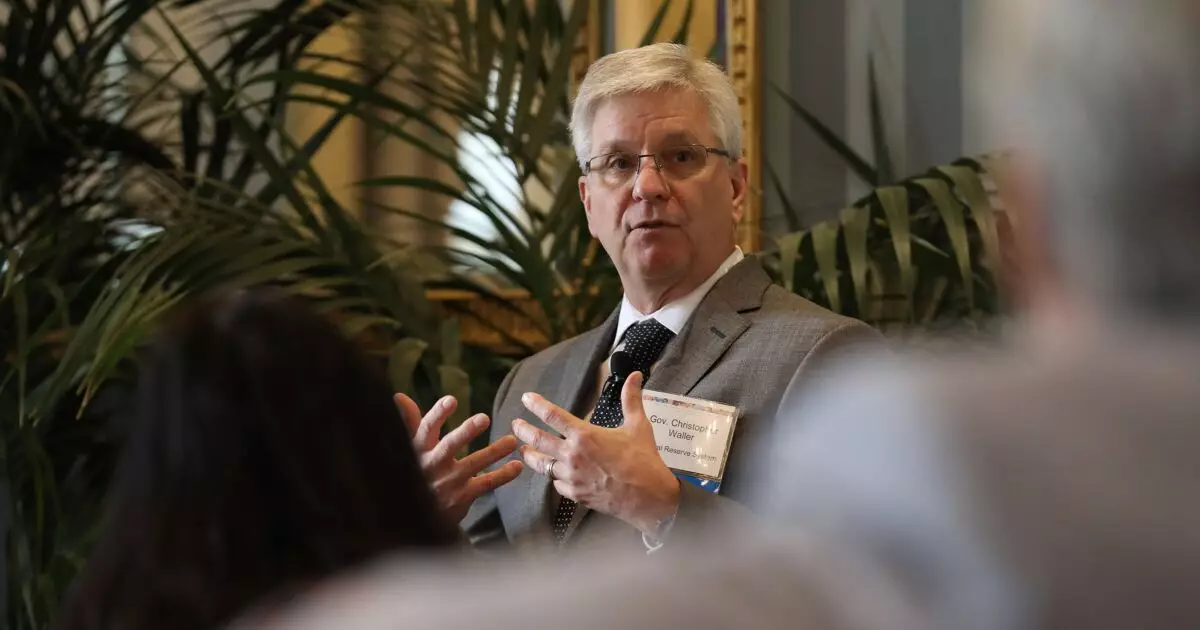The landscape of U.S. monetary policy is currently under intense scrutiny as Federal Reserve officials navigate the complexities of the economic environment. Recently voiced sentiments from Fed Governor Christopher Waller highlight the central bank’s potential path toward cutting interest rates, a move that could redefine the economic outlook heading into the new year. Understanding Waller’s observations and the implications of such decisions is essential for grasping the broader economic context and the factors that could influence future monetary policy.
In his recent speech, Waller suggested that the Federal Reserve’s Open Market Committee might consider reducing interest rates by an additional quarter-percentage point. His assertion hinged on the belief that the current policy remains sufficiently restrictive, allowing the central bank to adjust rates without jeopardizing efforts to manage inflation effectively. Waller emphasized that the timing of this potential cut would depend on upcoming data releases, setting the stage for an analytical approach to monetary policy that emphasizes adaptability in the face of evolving economic data.
While this contemplation of easing monetary policy may provide relief to borrowers and stimulate lending, it raises critical questions. The backdrop of this anticipation includes three previous rate reductions this year. These moves, aimed at balancing economic growth against inflation control, underscore the Fed’s delicate balancing act in managing the economy’s trajectory.
For financial institutions, a reduction in the federal funds rate is often viewed positively, as lower rates can create more opportunities for lending. However, this dynamic can also lead to narrower net interest margins, which are crucial for banks’ profitability. Waller’s comments reflect an understanding of these competing interests; banks may celebrate lower rates for the potential to rejuvenate lending, but the trade-off of diminished margins cannot be overlooked.
The implications of interest rate decisions extend beyond the banking sector—they affect consumers, investors, and businesses alike. A looming question remains: will this cycle of reductions foster robust economic growth, or could it sow seeds of instability in the face of persistently high inflation? As the Fed considers its next steps, the tension between stimulating growth and ensuring long-term stability becomes ever more pronounced.
Waller’s remarks pointed to a concerning trend in inflation. While the Fed aims for a target rate of 2%, inflation metrics remain stubbornly high, hovering around 2.8%. He identified nonhousing core services as significant contributors to this elevated rate, indicating that despite some progress, the economic environment still demands vigilance. Waller’s observations underline that a premature declaration of victory over inflation could have severe repercussions for fiscal health.
The Fed’s dual mandate—to promote maximum employment while maintaining stable prices—requires a nuanced understanding of how inflation affects labor markets. Current employment data, as noted by Waller, remains complex. Distortions from external events like strikes and natural disasters add layers of uncertainty that complicate decision-making. The upcoming labor market reports are thus pivotal; they hold the potential to shape the Fed’s immediate strategy regarding interest rates.
Waller’s approach reflects a broader narrative within the Federal Reserve: the need for careful assessment as economic indicators shift. The interplay between inflation trends and employment figures elucidates the web of challenges that policymakers face. For Waller, the metaphor of grappling with inflation akin to a mixed martial arts fighter elucidates the frustration faced by authorities as they exert control over economic pressures only to see them evade definitive resolution.
The anticipation surrounding the next steps for interest rates encapsulates a broader sentiment in the economic community. Waller’s remarks reveal that monetary policy is not merely a series of adjustments but a carefully calculated strategy aimed at sustaining economic stability. Whether the Fed promotes a rate cut this month or opts for a more cautious approach, the focus on gathering comprehensive data remains crucial.
As the Federal Reserve navigates this pivotal moment, its decisions will resonate across the economic landscape. The potential for further interest rate cuts represents a critical juncture for monetary policy, balancing the delicate act of encouraging growth while managing inflation. The Fed’s approach will undoubtedly shape the financial ecosystem, impacting everything from consumer habits to corporate investment strategies. As policymakers continue to analyze the data and forecasts, their decisions will reflect an ongoing commitment to fostering a stable and resilient economy in the face of uncertainty.

